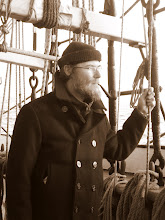The ground beneath our feet sometimes holds some interesting history.
Case in point the this system described at Damn Interesting
The Remarkable Pneumatic People-Mover of 1870
This system used a sealed brick tunnel in which a passenger car ran. The system was propelled by air pressure acting on the car, the end of the tunnel was fitted with a great steam powered blower that exhausted the air from the tunnel producing a vacuum. The difference in air pressure across the car propelled it along the tunnel.
A demonstration system was built underneath Broadway in New York and opened to the public in Feb of 1870.
From the link above:
----
On the twenty-sixth of February 1870, Alfred Beach finally exposed his secret tunnel for the inspection of the public. The event was described by one silver-tongued newspaperman as a “Fashionable reception held in the bowels of the Earth.” Visitors entered the basement of Devlin’s clothing store by way of a vestibule which had special linked doors on either end; the inner door would not open until the outer door was closed, providing a rudimentary airlock for the pneumatic pressure. Therefrom they emerged into an ornate lobby encrusted with the stuff of high society, including wood trimmings; chandeliers; an ornate, goldfish-filled fountain; and a grand piano. Although electrical service was still a thing of the future, the underground lobby was brilliantly illuminated by a collection of new zircon oxygen/hydrogen gas lamps.
At the far end of the waiting area was the portal to America’s first subway, installed “for the purpose of temporarily illustrating, by an actual demonstration, the feasibility of placing a railway under Broadway.” The tunnel was framed in handsome brickwork, and two stately bronze effigies of Mercury stood alongside. On a placard above the tunnel hung the words, “Pneumatic / 1870 / Transit.” For a fare of two bits per passenger– all of which was donated to a charity for soldiers’ orphans– twenty guests at a time could take a ride on the pneumatic carriage.
The custom-built, fifty-ton blower was situated in an adjacent chamber, separated from the waiting area by a long corridor. The Æolor blower was twenty-one feet high, sixteen feet long, and thirteen feet wide, and it contained two colossal lengthwise paddles which rotated to draw air in through the rear and thrust it out from the front. The magnificent blower was also outfitted with a special set of adjustable baffles which allowed her to switch from suck to blow without reversing rotation. By tapping a telegraph wire, the conductor signaled the boiler engineer to engage the 100 horsepower steam engine. Atmospheric pressure increased by “a few grains per inch,” pressing the carriage into the tunnel as the air rushed to escape through the vent at the far end.
----
Here is how a visitor described a trip on this experimental wonder.
We took our seats in the pretty car, the gayest company of twenty that ever entered a vehicle; the conductor touched a telegraph wire on the wall of the tunnel; and before we knew it, so gentle was the start, we were in motion, moving from Warren street down Broadway. In a few moments the conductor opened the door, and called out, Murray street! with a business-like air that made us all shout with laughter.The system was not a commercial success however and was abandoned in 1873. The tube, cars, blower and digging machine, used to bore the tunnel, remained until around 1918 when they were destroyed by the building of the electric subway system.
The car came to a rest in the gentlest possible style, and immediately began to move back to Warren street, where it had no sooner arrived, than in the same gentle and mysterious manner it moved back again to Murray street [...] Our atmospheric ride was most delightful, and our party left the car satisfied by actual experience that the pneumatic system of traveling is one of the greatest improvements of the day.”
An interesting system indeed.
Keep our sightglass full, your firebox trimmed and your water iced.
KJ




~ 0 comments: ~
~ Post a Comment ~